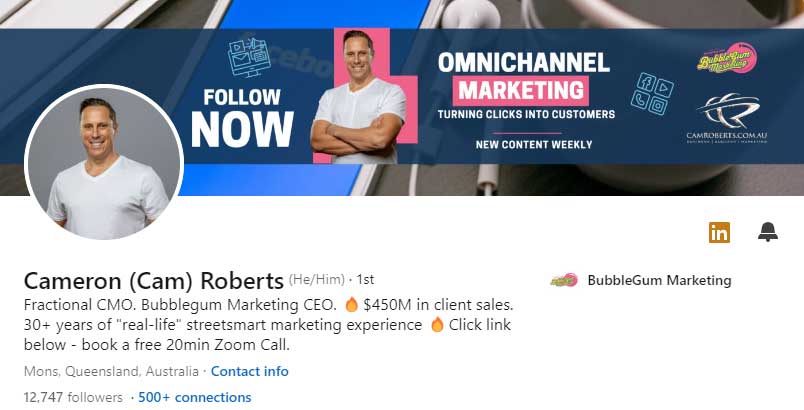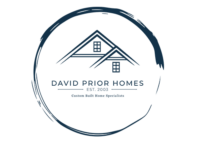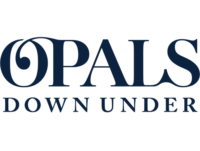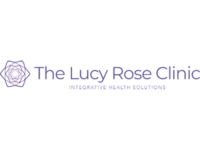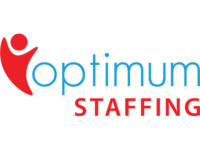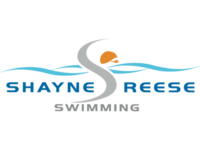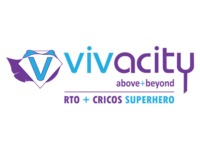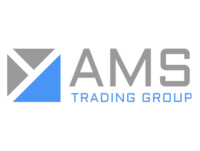Understanding the Stages of a Sales Funnel
By Cameron Roberts – Founder & CEO of Bubblegum Marketing,
Posted On January 16, 2025
A sales funnel is an essential idea for any business aiming to grow. It visually represents the customer journey from awareness to purchase.
Understanding the sales funnel stages can help refine your marketing strategy. It allows you to identify potential drop-offs and optimize your approach.
In this article, we will explore the distinct stages of a sales funnel. We’ll also discuss the systeme io physical products sales funnel template to enhance your sales process.
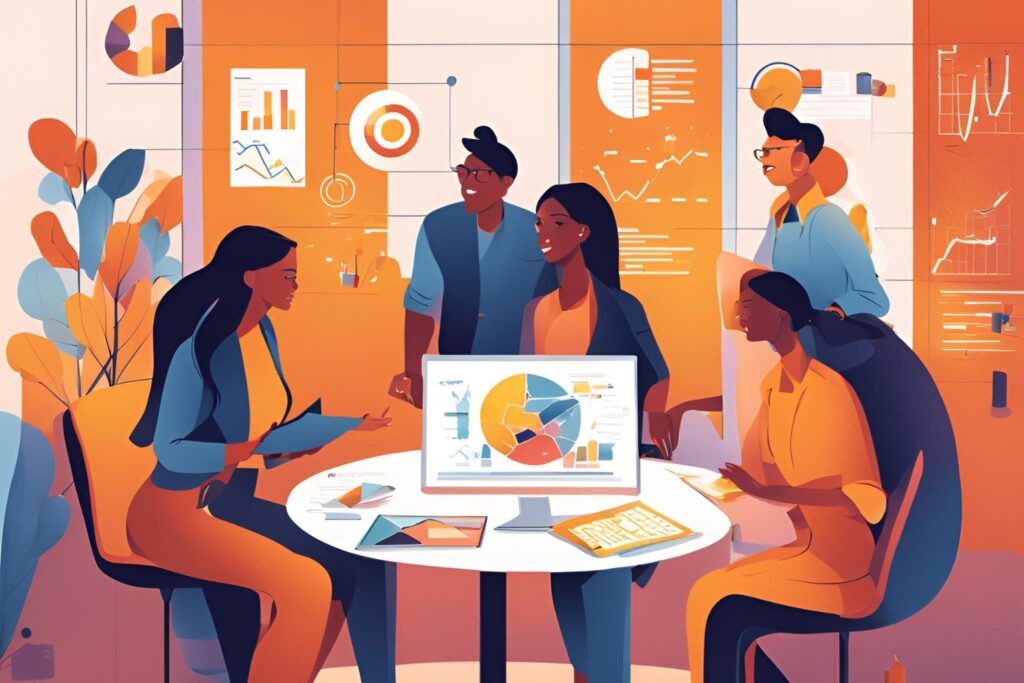
What is a Sales Funnel?
A sales funnel isn’t just a visual guide; it’s a strategy that divides the customer journey into different steps.
Each stage represents a specific part of the decision-making process, allowing businesses to identify possible drop-offs and areas where conversion can be improved.
Understanding these stages is crucial for optimizing marketing efforts and driving sales growth.
Traditional vs. Modern Sales Funnels
The traditional sales funnel is often depicted with four primary stages: Awareness, Interest, Decision, and Action. However, as consumer behavior evolves, modern sales funnels have expanded to include additional stages, such as Retention and Advocacy, to foster long-term customer relationships. Understanding the nuances between these models helps businesses adapt to changing market dynamics.
The Importance of Visual Representation
Visualizing the sales funnel helps teams across the organization understand the sales process’s progression. It gives a clear view of where potential customers are in their journey and shows important points of contact.
This visual helps marketing and sales work together. It makes sure they have the same plan.
Identifying Bottlenecks in the Funnel
A primary benefit of dividing the sales process into stages is the capability to spot bottlenecks. By examining where potential customers lose interest, businesses can apply targeted strategies to tackle these problems, boost conversion rates, and increase sales.
Stage 1: Awareness
The awareness stage marks the beginning of the sales funnel. This is when potential customers first come across your brand, product, or service.
This stage is vital as it lays the groundwork for the subsequent stages of the sales process. Capturing the attention of your target audience and creating a memorable first impression is the primary objective here.
Crafting Compelling Content
Creating engaging and relevant content is essential in the awareness stage. Blog posts, videos, and infographics that resonate with your audience’s pain points can effectively capture their interest. Good quality content establishes your brand as an expert and motivates potential customers to learn more.
Leveraging Social Media Platforms
Social media is a powerful tool for expanding your reach and engaging with a broader audience. By using platforms such as Facebook, Instagram, and LinkedIn, businesses can distribute content, engage with their audience, and enhance their brand visibility.
Consistent and authentic engagement on these platforms can significantly enhance visibility.
Optimizing for Search Engines
Search engine optimization (SEO) is crucial for increasing your website’s visibility and driving organic traffic. By enhancing your website’s content with appropriate keywords and refining technical SEO aspects, you can make sure your brand stands out in search results, attracting the interest of potential customers.
Stage 2: Interest
Once potential customers become aware of your brand, they enter the interest stage. Here, they actively seek more information about your offerings and assess whether they align with their needs. Encouraging their interest with helpful content and tailored interactions is crucial for moving them further along the funnel.
Building an Effective Email Marketing Strategy
Email marketing is a powerful tool for nurturing interest. By sending targeted emails that offer educational content, product insights, and case studies, businesses can keep prospects engaged and informed.
Customizing email campaigns can greatly improve the customer experience and boost engagement.
Hosting Engaging Webinars and Demos
Live demos and webinars help potential customers learn more about the benefits of your product. These interactive sessions allow potential customers to ask questions and engage directly with your team, fostering a deeper connection and building trust in your brand.
Implementing Retargeting Ads
Retargeting ads are a strategic way to keep your product top-of-mind for interested prospects. By displaying targeted ads to individuals who have previously interacted with your brand, you can remind them of the value your product offers and encourage them to continue their journey toward a purchase.
Stage 3: Decision
At the decision stage, potential buyers are ready to choose whether to make a purchase.
They have evaluated their options and are considering your product alongside competitors. Providing the correct information and incentives is crucial for making this decision and finalizing the sale.
Showcasing Customer Testimonials and Reviews
Customer testimonials and reviews are powerful tools for building trust and credibility. Positive feedback from satisfied customers can influence potential buyers’ decisions, reassuring them of your product’s quality and reliability. Highlighting testimonials prominently can sway prospects in your favor.
Offering Detailed Product Comparisons
Offering detailed comparisons between your product and competitors’ options can showcase your distinct advantages. By clearly explaining what makes your product different, you can help potential customers decide to choose your solution over others, addressing any remaining doubts.
Creating Enticing Promotions and Offers
Special deals, discounts, and free trials can help encourage people to buy. These offers create a sense of urgency and encourage prospects to take action. Customizing promotions to fit customer needs can greatly boost the chances of making a sale.
Stage 4: Action
The action stage is the culmination of the sales funnel, where the prospect decides to purchase your product. This stage involves finalizing the sale and ensuring a seamless transaction process. Ensuring that buying is easy and enjoyable is key to turning potential buyers into actual customers.
Streamlining the Checkout Process
A user-friendly and efficient checkout process is critical for minimizing drop-offs at this stage. Simplifying steps, offering multiple payment options, and ensuring mobile compatibility can enhance the buying experience, reducing friction and increasing conversion rates.
Providing Exceptional Customer Support
Great customer service sets you apart in the action stage.
Quickly responding to questions or worries can ease any last-minute doubts and boost the buyer’s confidence. Providing clear communication and support during the purchasing process is vital for customer satisfaction.
Implementing Post-Purchase Follow-Ups
Follow-ups after a purchase, like confirmation emails and thank-you notes, play a key role in keeping good relations with customers. Providing additional resources or support after the purchase can enhance the customer experience and set the stage for repeat business.

Beyond the Funnel: Retention and Advocacy
While the traditional sales funnel concludes with the purchase, forward-thinking businesses recognize the importance of retention and advocacy. Satisfied customers are more likely to make repeat purchases and advocate for your brand, driving a cycle of sustained growth and customer acquisition.
Developing Robust Loyalty Programs
Loyalty programs are effective tools for rewarding repeat customers and fostering long-term relationships. By offering incentives, discounts, or exclusive offers, businesses can encourage customer loyalty and increase lifetime value, transforming satisfied buyers into brand advocates.
Actively Seeking Customer Feedback
Customer feedback is invaluable for continuous improvement. Collecting feedback through surveys or direct conversations enables businesses to identify areas needing improvement and demonstrates a commitment to customer satisfaction.
Listening to customers’ voices strengthens relationships and drives innovation.
Encouraging Referral Programs
Referral programs encourage content customers to introduce others to your brand. Businesses can expand their reach by providing rewards or discounts for successful referrals, engaging their current customer base.
Recommendations made through word-of-mouth are strong motivators for attracting new customers.

Using Systeme.io for Physical Products Sales Funnel
Systeme.io is a comprehensive marketing platform designed to simplify the creation and management of sales funnels for physical products.
Featuring an easy-to-use interface and adaptable templates, businesses can effectively design funnels to suit their unique requirements, making the sales process smoother.
Leveraging User-Friendly Functionality
Systeme.io’s drag-and-drop functionality makes building sales funnels accessible to users without technical expertise. The platform’s user-friendly design empowers businesses to create professional funnels quickly, allowing teams to focus on strategic initiatives rather than technical hurdles.
Integrating Seamlessly with Other Tools
Systeme.io’s integration features offer a major benefit. The platform seamlessly connects with other tools, such as email marketing services and payment gateways, enabling businesses to create a cohesive ecosystem for managing their sales processes, enhancing efficiency and effectiveness.
Customizing Templates for Diverse Business Models
Systeme.io offers a variety of templates, including the Systeme.io physical products sales funnel template, to accommodate different business models. This flexibility allows businesses to tailor their funnels to align with their unique goals and strategies, optimizing their sales funnel management.
Conclusion
Understanding the stages of a sales funnel is essential for any business striving to optimize its sales process and convert prospects into loyal customers.
By successfully guiding potential customers through each stage of the buying journey, starting from the initial awareness phase all the way to the point of advocacy, you can significantly enhance your sales strategy. This not only helps in closing more sales but also in fostering a lasting relationship with your customers. As a result, you can create a solid foundation for sustainable growth in your business over time.
Implementing tools like Systeme.io can further streamline your efforts, providing a comprehensive solution for managing your sales funnels effectively.By focusing on each stage of the funnel and leveraging the right tools, your business can achieve greater success and build lasting relationships with customers.
Keep in mind that for a sales funnel to succeed, it is important to keep optimizing and adapting to the changing needs of your audience. Embrace the power of the sales funnel and transform your approach to sales and marketing today.
WANT TO BE OUR NEXT SUCCESS STORY?
Book a Free Consult
Schedule a 15-minute Free Consultation via Zoom meetings with our Director, Cam Roberts by clicking the button below now:
Recent Articles
- Why Your Email Click Rates Look Low in 2025
- How Our eCommerce Marketing Agency Drove 121% Growth
- What Is Google BARD? A Guide to Google’s New AI
- Facebook Ads Budgeting & Strategies for 2025
- Top Marketing Strategies from Fortune 500 Companies
- Weird & Wonderful: Things Google Probably Doesn’t Want You to Know
- Top 7 Mistakes Businesses Make Without a Facebook Ads Specialist
- Why Automated Sales Funnels Are a Game-Changer for Small Businesses
- How to Choose the Right Facebook Ads Agency in 2025
- Social Media Advertising Trends 2025 for Business Growth
Request A Quote
Request A Quote for your next Website or Funnel Project below:
